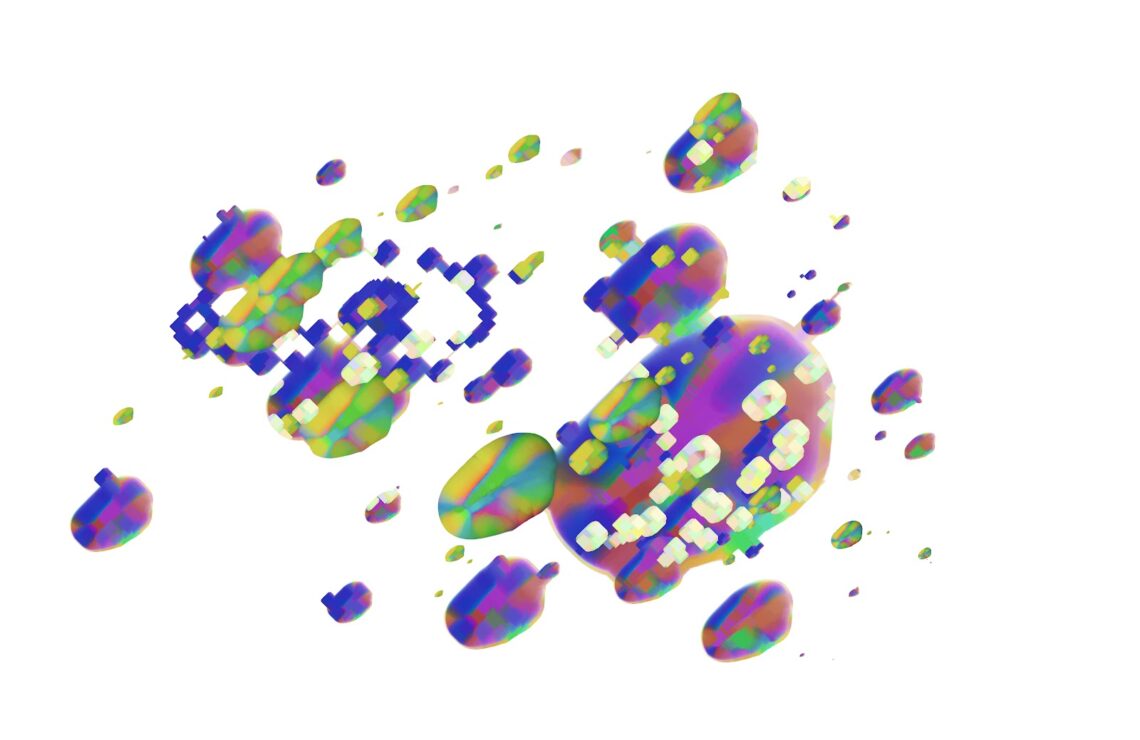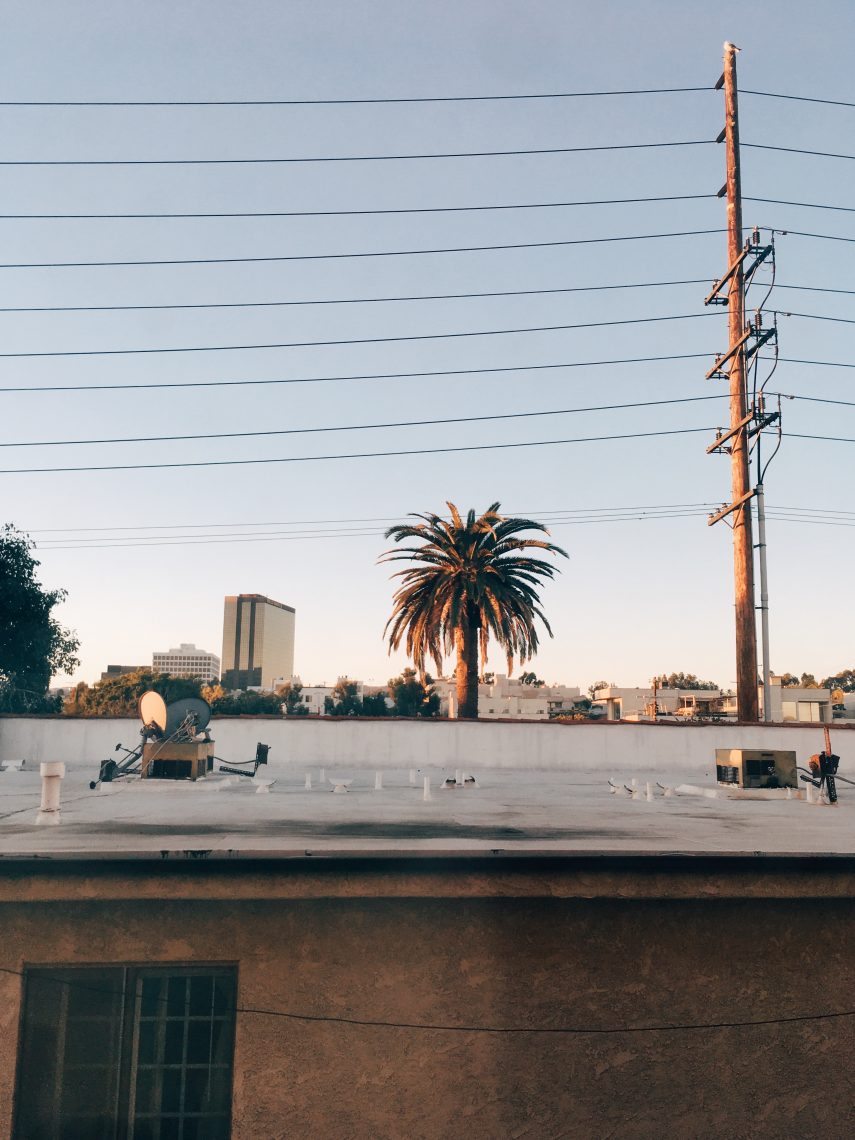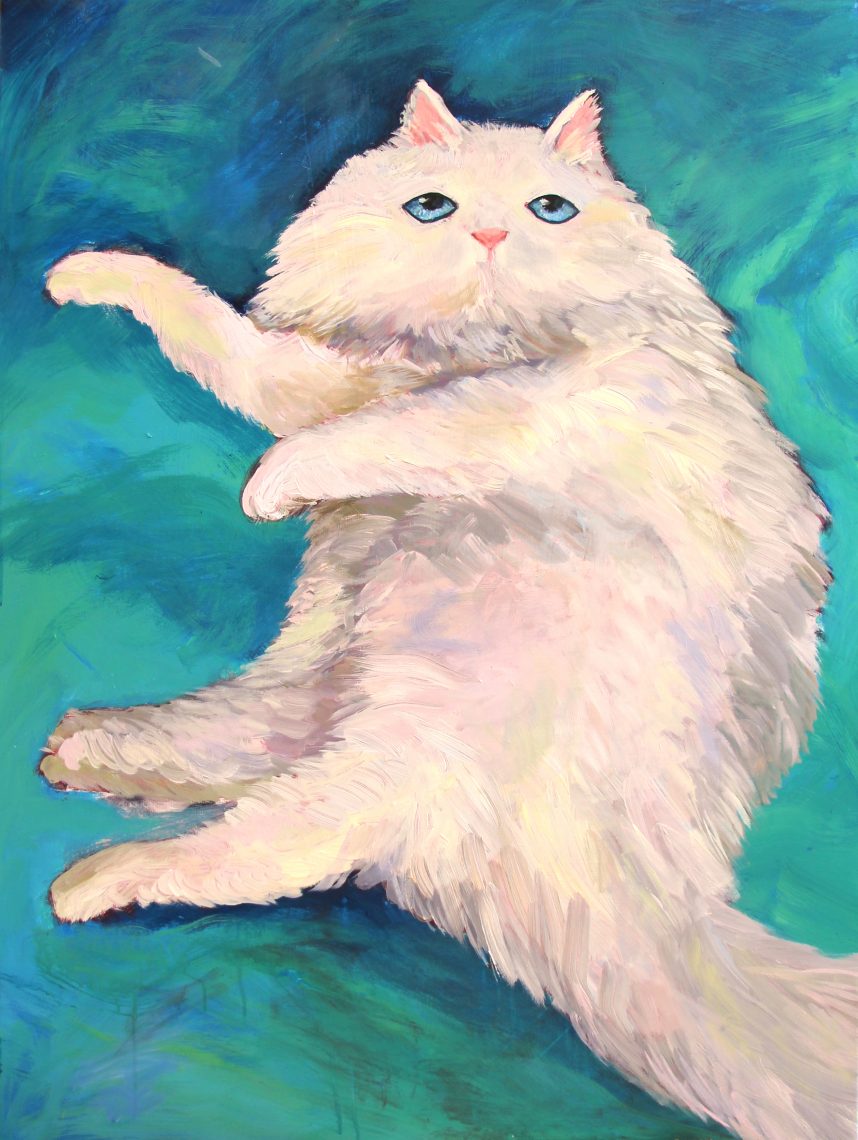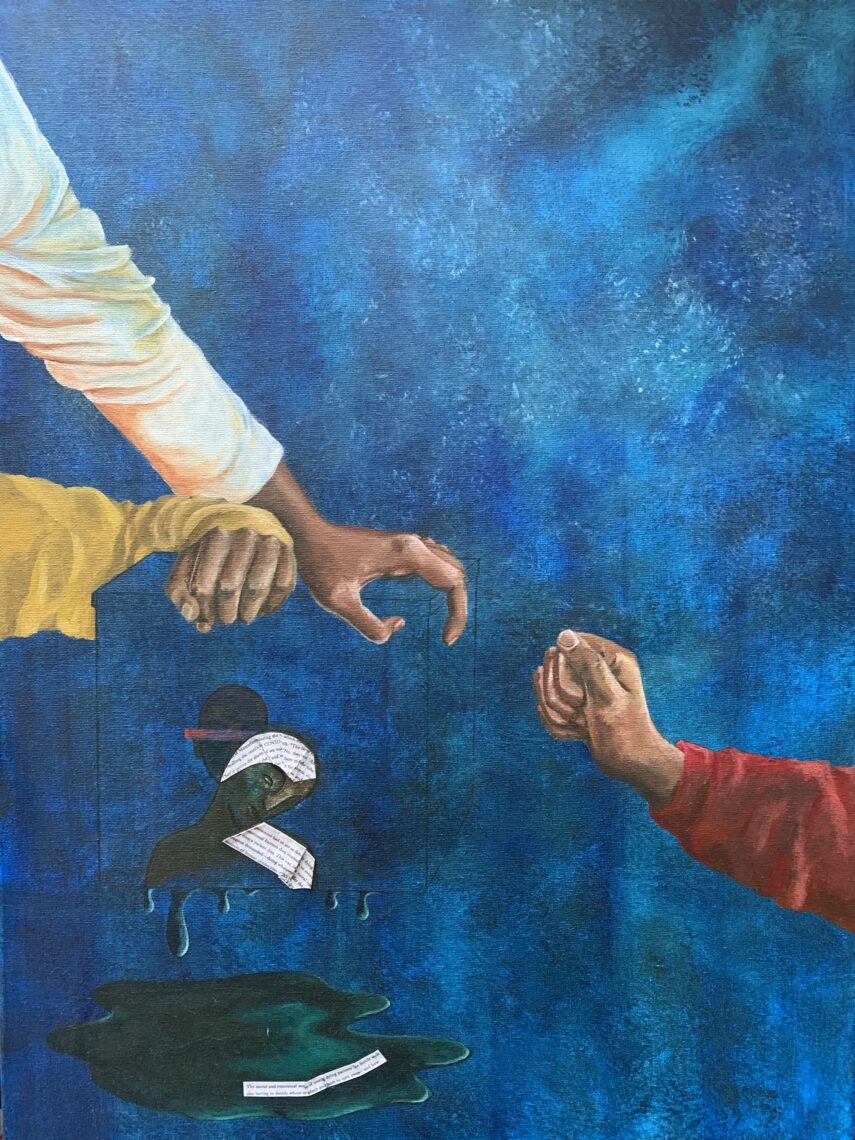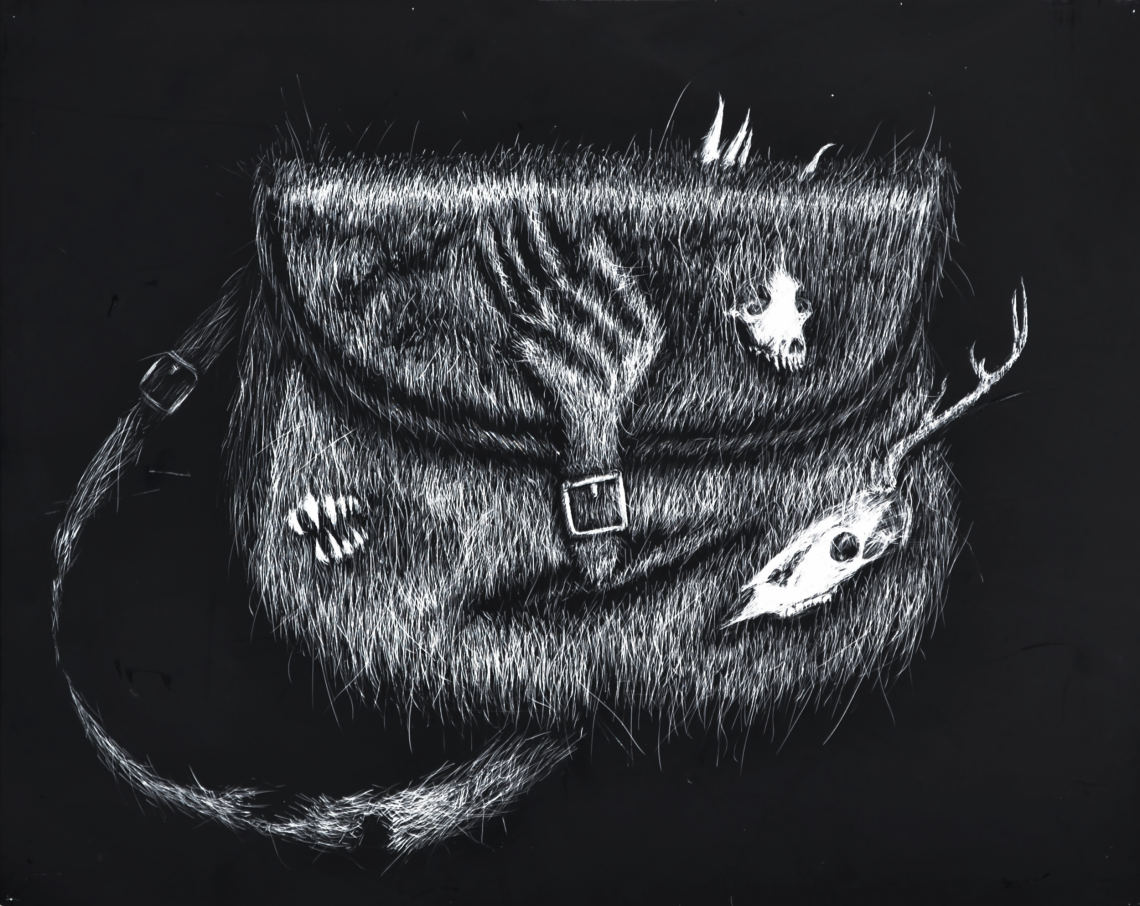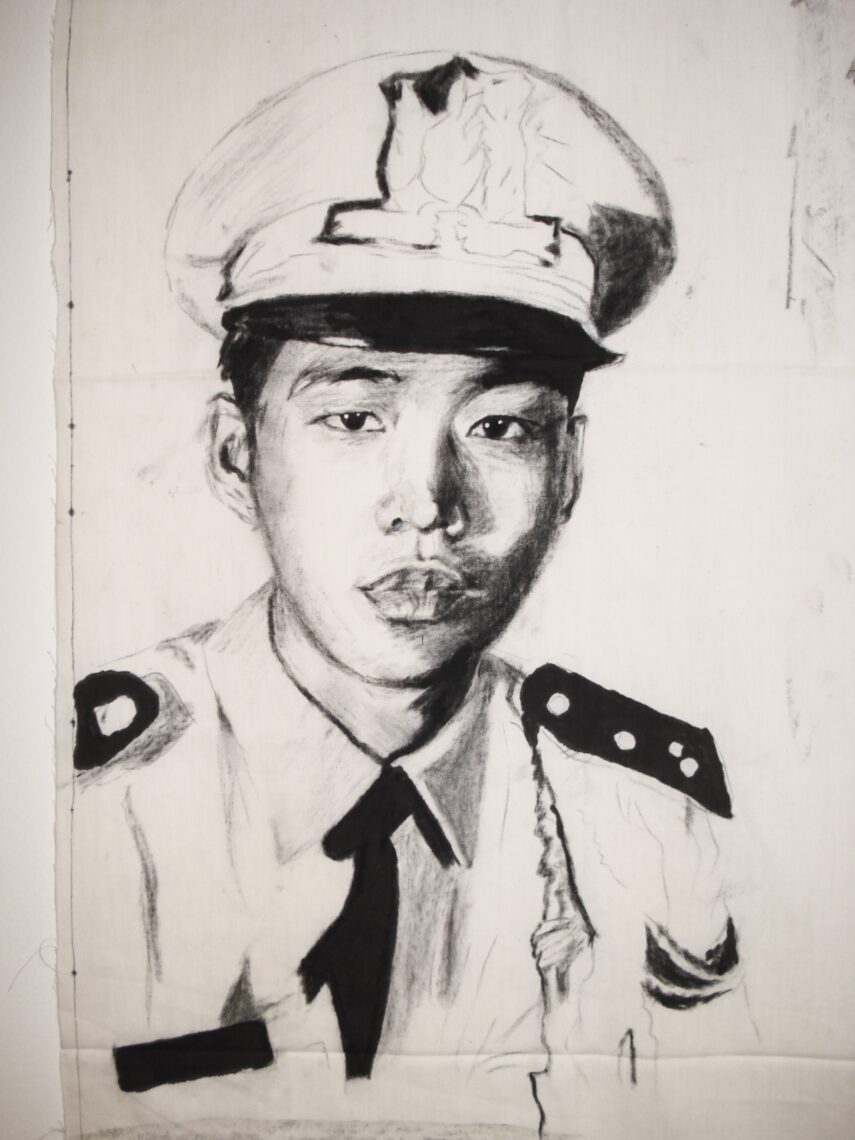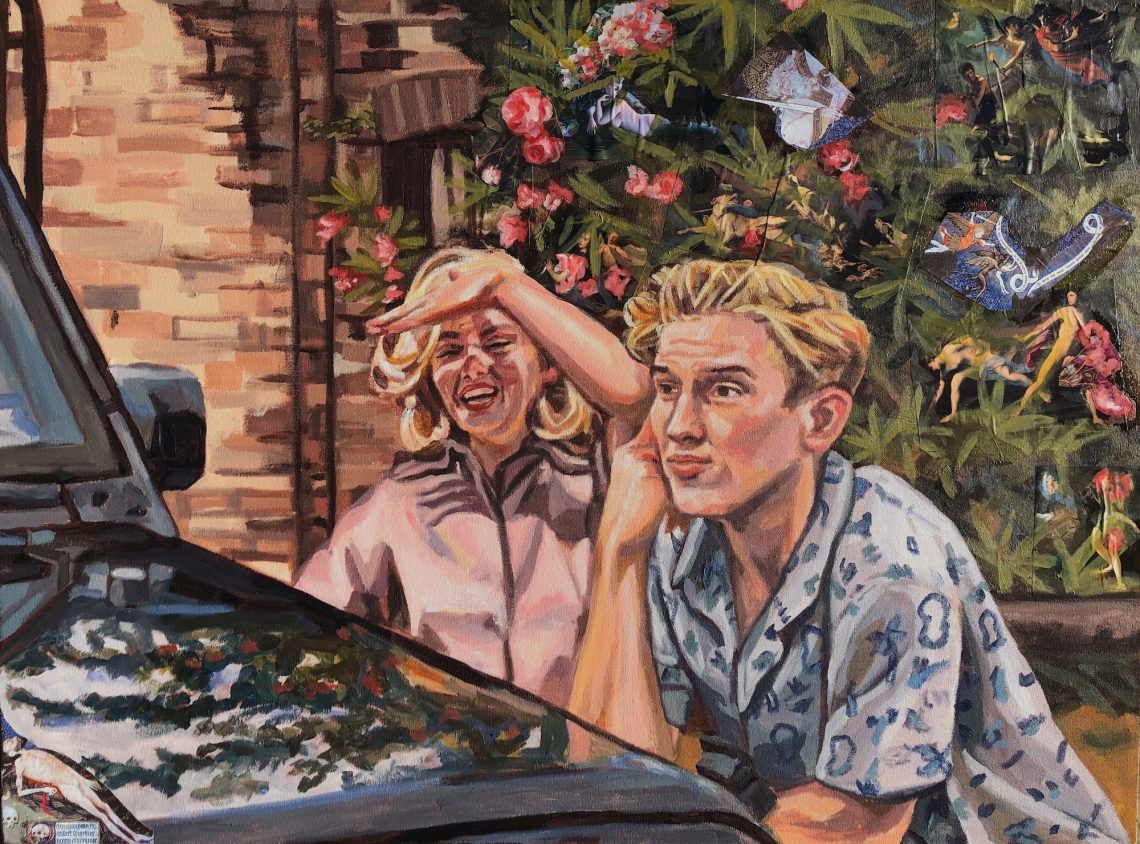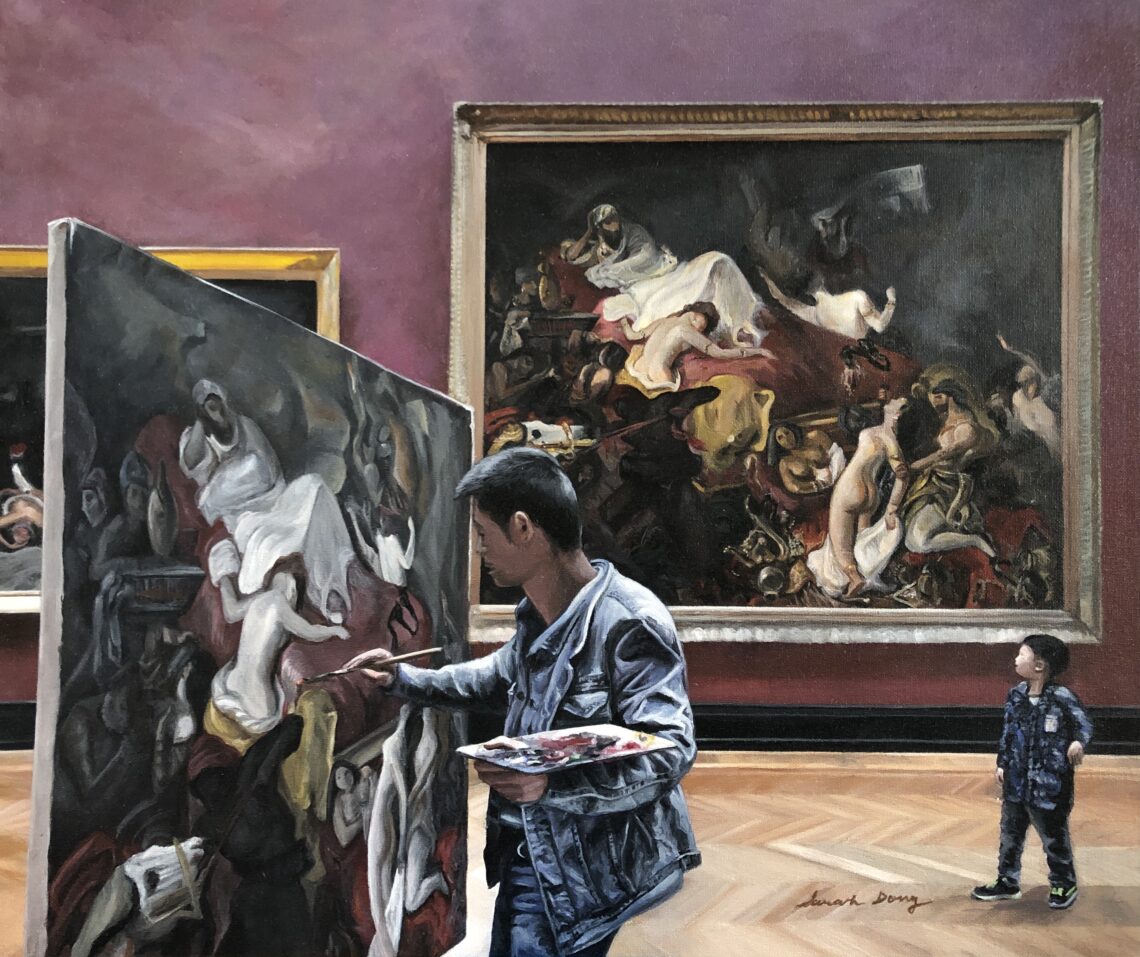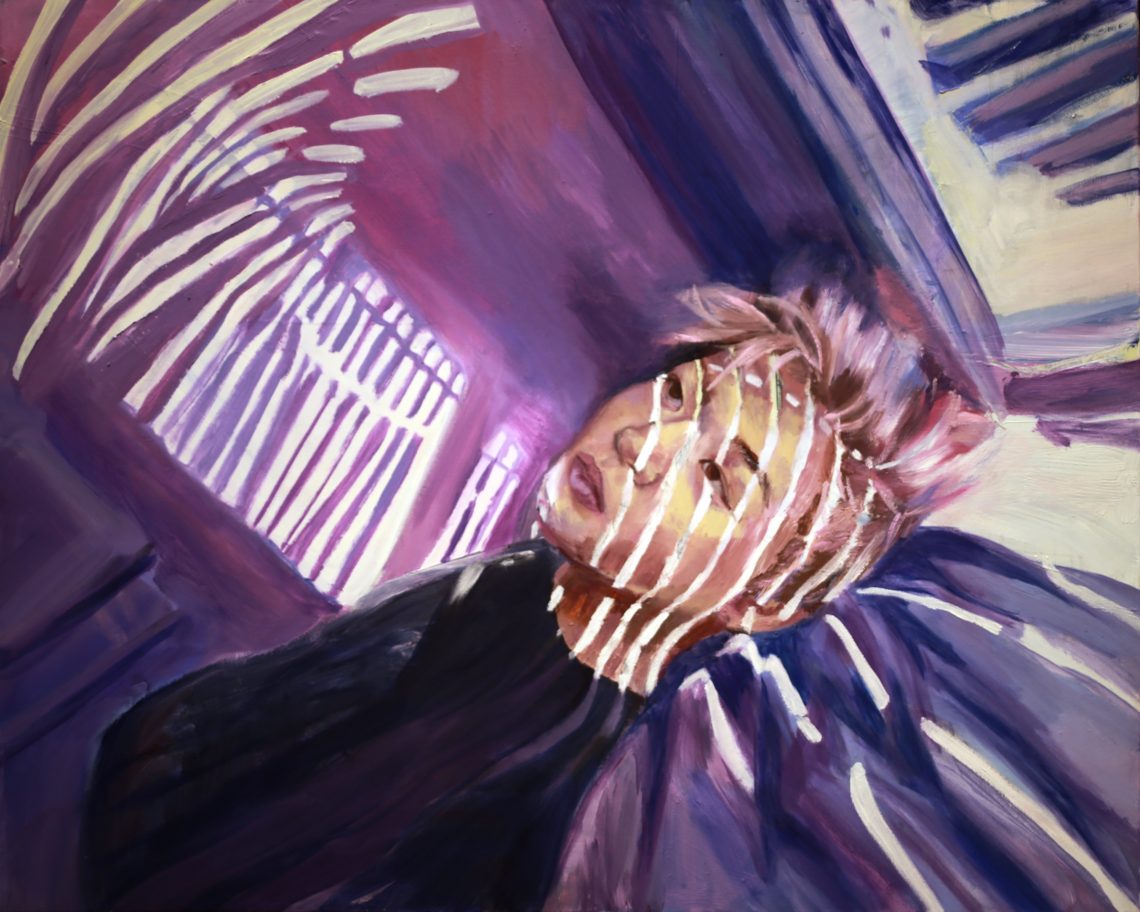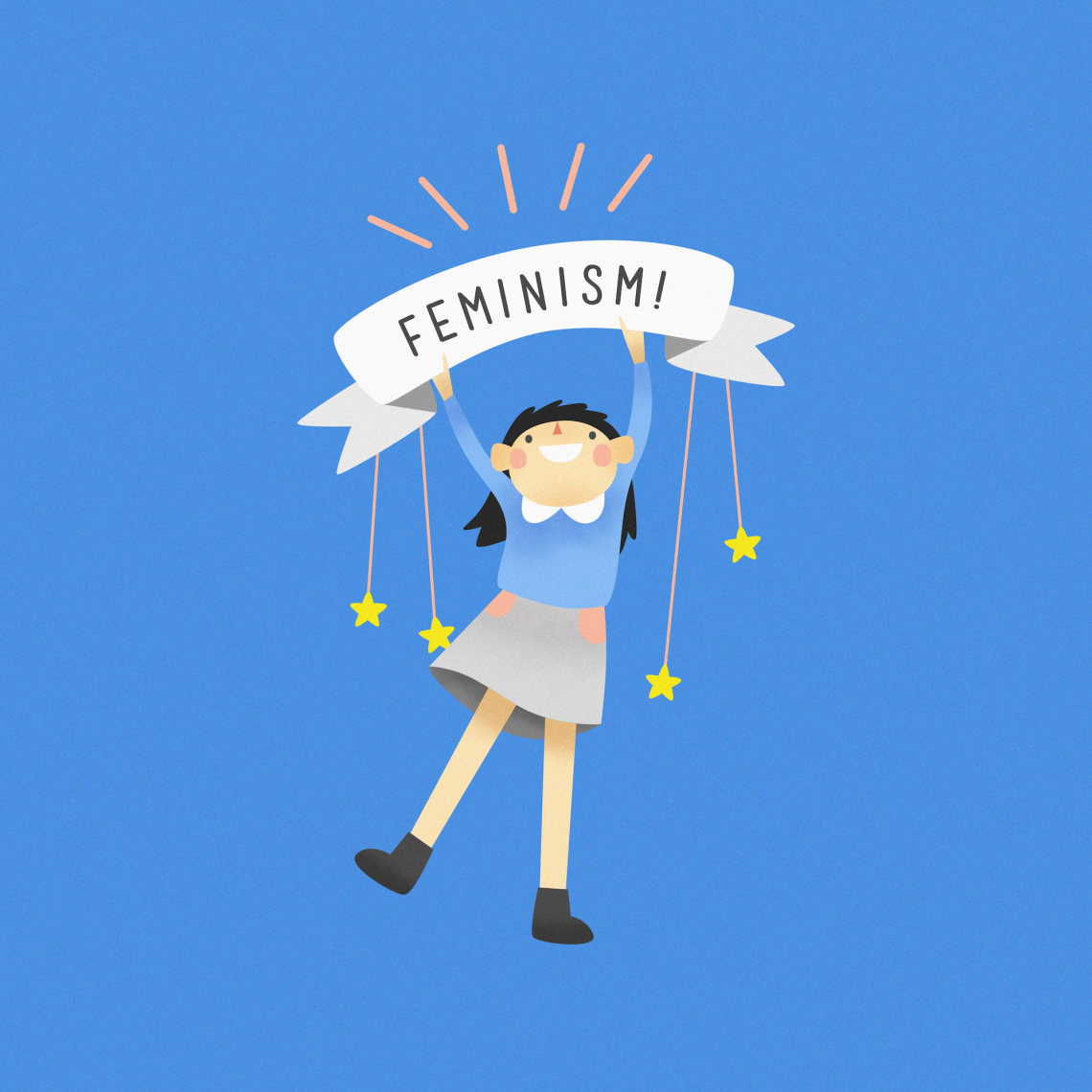
Camille Utterback, center, conducts a critique of a project with her class.
L.A. CiceroInternational interactive artist Camille Utterback delivers public lecture as part of the new Mohr Visiting Artist Program at Stanford
The artist discusses her interactive installations and how they engage the viewer in a dynamic, kinesthetic experience at the intersection of art and technology.
Pioneering artist Camille Utterback’s acclaimed interactive installations and reactive sculptures engage participants in a dynamic process of kinesthetic discovery and play. It is difficult to simply observe her work. It begs investigation and participation.
To create her work, Utterback uses video tracking software and other sensors to react and respond to human movement and gesture. Her work explores the aesthetic and experiential possibilities of linking computational systems to human movement and gesture in playful yet subtly layered ways. “In my work, I’m interested in systems and how our bodies and selves interact with those systems,” she said. “Technology is a particular system and by writing software or using other digital tools that allow variables and variation, it lets me create spaces where people can have their own experiences and make their own decisions within those parameters.”
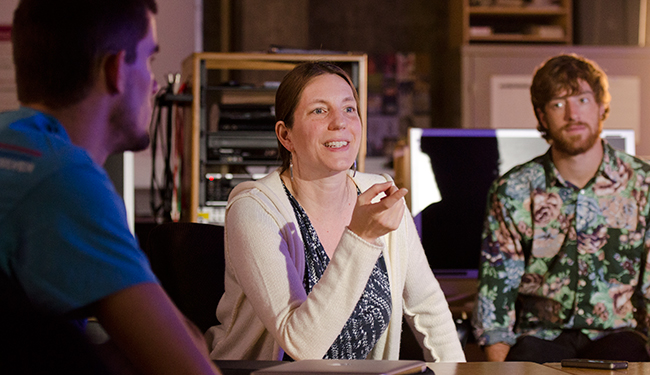
L.A. Cicero
Utterback, whose work can be experienced at Mineta San Jose International Airport, is presenting an artist talk tonight, Feb. 16, at 5:30 p.m. in room AR2 of the Cummings Art Building. The talk is free and open to the public. During her talk, she will show documentation of her interactive installations and discuss her artistic and technical processes.
Shifting representations of time
As part of Utterback’s winter-term visiting artist residency, she is teaching an undergraduate art practice course titled Time Shifts that examines how individual perceptions and artistic representations of time have shifted with technology changes – from Etienne-Jules Marey and Eadweard Muybridge’searly photography to 20th-century filmmaking and video to the latest digital media including new types of cameras.
It is exciting for me to encourage playfulness in people by putting them in these spaces where they have to experiment to understand what’s happening and figure out what their role is or what they want to do in that space.
“I’m loving teaching here at Stanford. The students are so engaged and work so hard,” Utterback said. In addition to studio space and access to a host of digital tools, Utterback has enjoyed Stanford library privileges during her residency. “It has been a special treat to have access to the rare materials in the art library. When you are a professional artist out in the world and not associated with a university, you don’t have access to a lot of [research] resources and particularly not the depth of resources that are available at Stanford.”
Stanford hosts an array of visiting artists on campus in short- and long-term residencies through the year. Utterback is the first Mohr Visiting Artist and her residency, hosted by the Department of Art and Art History, is part of the new Mohr Visiting Artist Program administered by the Stanford Institute for Creativity and the Arts. The program brings acclaimed and emerging artists to campus for one quarter to teach a credited course and provide a presentation, exhibit or performance for the Stanford community and the public.
Other visiting artists on campus this winter quarter are Jeffrey Bihr, Chad Bonaker and Ann Carlson, hosted by the Department of Drama, and Louise Glück, the Mohr Visiting Poet in the Creative Writing Program.
“I think my work is really fun for people, and play is such an important element of learning and thinking. It is exciting for me to encourage playfulness in people by putting them in these spaces where they have to experiment to understand what’s happening and figure out what their role is or what they want to do in that space,” Utterback said.
Born in Indiana
Utterback was born in Bloomington, Ind., in 1970. She earned a bachelor’s degree from Williams College and a master’s degree from the Interactive Telecommunications Program at New York University’s Tisch School of the Arts. She originally trained as a painter and is now recognized as an interactive installation artist.
Utterback’s extensive international exhibition history includes more than 50 shows on four continents. Awards include a MacArthur Foundation Fellowship (2009), a Transmediale International Media Art Festival Award (2005), a Rockefeller Foundation New Media Fellowship (2002) and a commission from the Whitney Museum of American Art for the CODeDOC project on the museum’s Artport website (2002). She also holds a U.S. patent for a video tracking system she developed while working as a research fellow at New York University.
Her work is included in the collections of La Caixa Foundation in Spain, Itaú Cultural Institute in Brazil, 21c Museum in Louisville, Ky., the Pittsburgh Children’s Museum, the Massachusetts Institute of Technology and other private collections.
Recently completed public commissions include Active Ecosystem (SMF) (2011) with Michelle Higa for the Sacramento International Airport and Shifting Time – San Jose (2010) for the Mineta San Jose International Airport.
Articles about her work have been featured in Art in America, Wired, The New York Times, ARTnewsand the 2003 publication Digital Art by Christiane Paul.
Utterback has taught in the MFA design and technology program at Parsons The New School for Design and the graduate Interactive Telecommunications Program at New York University. She lives and works in San Francisco.




